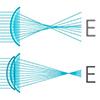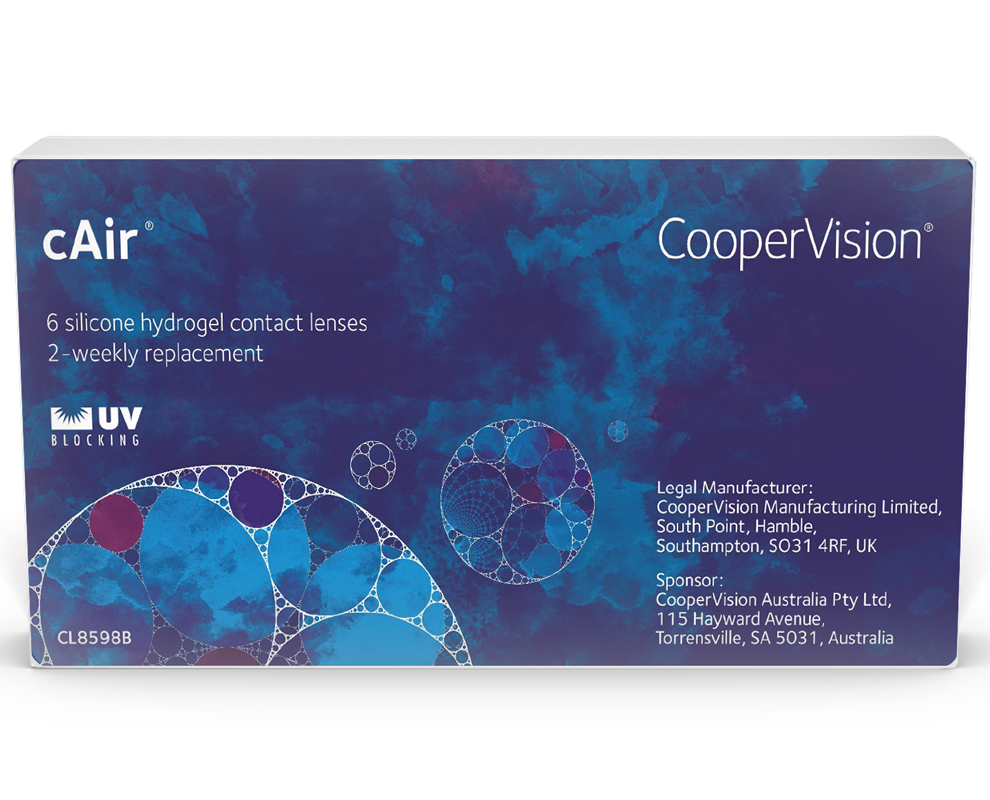Description
cAir® are 2-weekly replacement silicone hydrogel contact lenses for myopic and hyperopic patients.
Features and Benefits
- Long-lasting comfort*1
- Aberration Neutralising System™ for clear vision3
- High breathability for clear and white eyes‡5
- Naturally wettable material with no need for surface treatments or coatings3
- Class 1 UV blocker- blocks more than 90% UVA and more than 99% UVB rays#
- Available for 99.9% of prescriptions so you can meet the needs of almost every myopic or hyperopic patient6

| Naturally WettablecAir® contact lenses are made of the silicone hydrogel material that provides natural wettability, without coatings or surface treatments, to support comfortable and healthy lens-wearing experience.*†1,2,3 |

| Aberration Neutralising System™Aspheric front surface design unique by lens power. It is designed to help counteract the eye's average spherical aberration, leading to clear vision.3 |
Product Details
-6.00 to -0.25DS (0.25D steps)
+0.25 to +6.00DS (0.25D steps)
+6.50 to +8.00DS (0.50D steps)
Packaging images for illustration purposes only.
* After 12 hours of wear, at 2 weeks or 1 month.
† With high oxygen delivery for daily wear, SiHy materials minimise or eliminate hypoxia-related complications during daily wear.
‡ Low bulbar and limbal hyperemia ratings after 2 weeks of daily wear.
§ Retail price is solely at the discretion of the retailer at all times. CVI commentary on price positioning is not meant to influence the price any retailer charges.
# Warning: UV-absorbing contact lenses are not substitutes for protective UV-absorbing eyewear, such as UV-absorbing goggles or sunglasses, because they do not completely cover the eye and surrounding area. Patients should continue to use UV-absorbing eyewear as directed.
References:
1. CVI data on file, 2016. Randomised, subject masked, bilateral, daily wear, one month, dispensing study of cAir® sphere, n=47.
2. CVI data on file, 2024; Sulley A, Dumbleton K. Silicone hydrogel daily disposable benefits: The evidence. CLAE. 2020;43(3):298-307.
3. CVI data on file, 2024.
4. Brennan NA. Beyond Flux: Total Corneal Oxygen Consumption as an Index of Corneal Oxygenation During Contact Lens Wear. Optom Vis Sci. 2005;82(6):467-472.
5. CVI data on file, 2017. Prospective, multi-center, bilateral 2 week daily wearing study with cAir® N=63.
6. CVI data on file, 2020. Rx coverage database; 14 to 70 years; Rx with <0.75DC.
CooperVision soft contact lenses for vision correction. Your optometrist will advise if this product is right for you. Always read the label and follow the directions for use. (https://coopervision.net.au/patient-instruction)
SA14564







